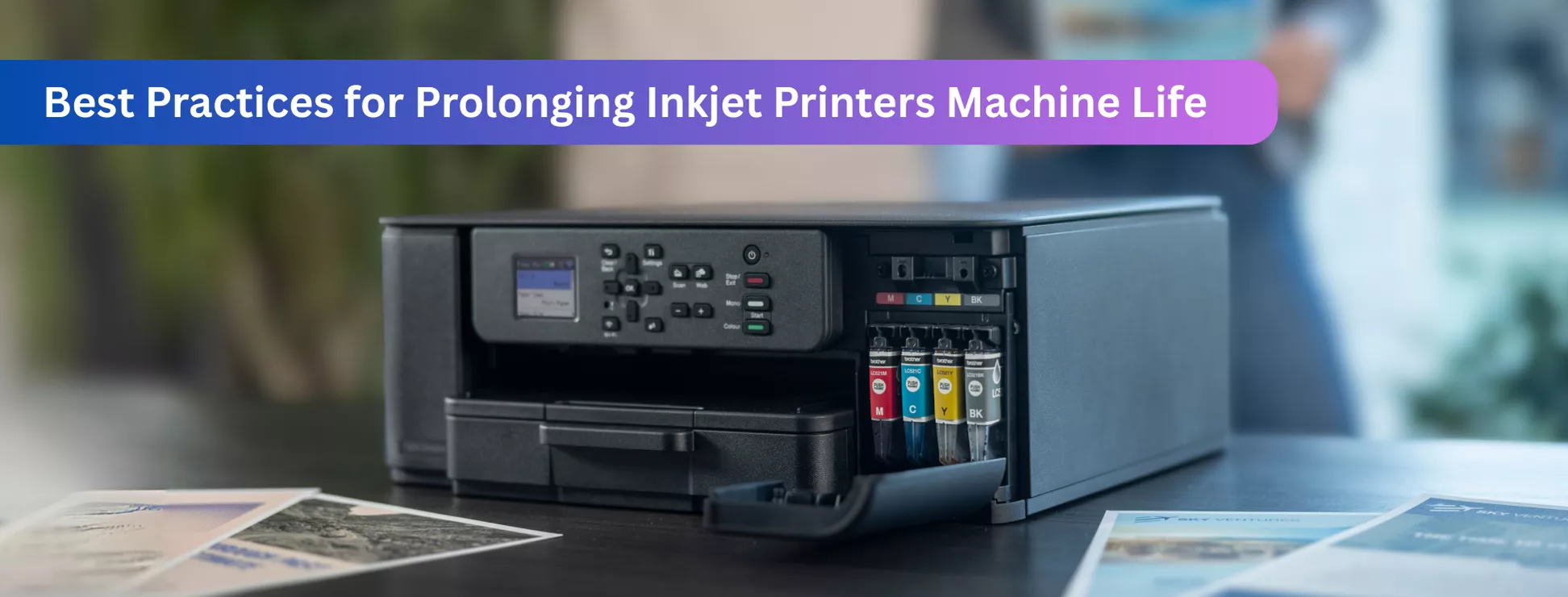Best Practices for Prolonging Inkjet Printers Machine Life

Inkjet printers are indispensable tools for home offices, small businesses, and creative professionals, delivering high-quality prints for a wide range of applications. However, without proper care, these devices are susceptible to various issues that affect output quality and longevity. Consistent maintenance not only ensures optimal performance but also extends the longevity of your printing investment.
Importance of Proactive Maintenance
Inkjet printers operate by propelling microscopic ink droplets through precision nozzles, a process that makes them vulnerable to blockages from dried ink, dust accumulation, or other environmental factors, especially when idle for a long period of time. Without regular upkeep, these issues can degrade print quality and lead to premature hardware failure. On average, inkjet printers have a lifespan of 3-5 years under typical usage conditions, but diligent maintenance can extend machine life for much longer, maximizing return on investment.
Eight Essential Maintenance Practices for Inkjet Printers
1. Maintain Regular Printing to Prevent Ink Clogs
Inactivity is a primary cause of print head clogs due to dried ink. To maintain nozzle functionality, print at least one page weekly, such as a test pattern or diagnostic sheet. This practice ensures ink flow and prevents sediment buildup, significantly reducing the risk of blockages.
2. Keep the Printer Powered-on for Automatic Nozzle Cleaning
Many inkjet printers, including Brother models, are designed to perform automatic cleaning cycles to maintain print head health. These cycles run periodically when the printer is powered on, flushing small amounts of ink through the nozzles to prevent clogs. To enable this feature, keep your printer connected to a power source and in a standby or low-power mode when not in use. Avoid unplugging the device or using a power strip that cuts electricity completely; cutting off power source to inkjet printers can cause mechanical wear due to the stress on internal components, potentially reducing the printer’s lifespan or using more ink for cleaning cycles compared to staying powered on in a low-energy standby mode.
3. Use High-Quality, Brother Genuine Ink and Ink Cartridges
Low-cost, non-branded ink and ink cartridges may reduce upfront costs but often lead to significant clogs, leaks, or damage that can void warranties. For Brother inkjet and ink tank printer users, opt for Brother genuine ink or ink cartridges to ensure compatibility and reliability. Brother Printers are engineered for high-yield performance with minimal waste when using with Brother Genuine Consumables.
4. Optimize Storage Conditions
Environmental factors significantly impact printer longevity. Store the device in a controlled environment with temperatures between 18 - 24°C and relative humidity of 40 - 80%, away from direct sunlight, heating vents, or dusty areas. Close the paper tray when not in use to prevent dust ingress or paper deformation. For long-term storage, run a cleaning cycle prior to shut down and cover the printer with a breathable cloth.
5. Use Appropriate Paper and Load Correctly
Selecting the correct paper type and weight for your printer’s specifications is critical. Heavy or incompatible media can strain rollers and cause jams. For Brother Printers, before loading, ensure paper is fed according to the in-machine marking to avoid overfilling the tray to minimize mechanical stress. Proper paper handling procedures preserve internal components over time.
6. Monitor Usage and Conduct Diagnostic Checks
Regularly review page counts via the printer’s status report feature and run diagnostic tests frequently to detect potential issues early. Address anomalies such as streaking or faded prints promptly to prevent further damage. For instance, Brother printer users can monitor ink levels and maintenance needs proactively through Brother Mobile Connect App. Implementing these practices ensures consistent print quality, reduces downtime, and significantly extends the operational life of your inkjet printer.
Brother Inkjet Printers
Brother inkjet printers, such as the DCP-J and MFC-J series, are recognized for their durability, user-friendly features, and cost-efficient ink systems, making them a preferred choice for both home and small business environments. Brother inkjet printers have an average lifespan of 3-5 years. With diligent adherence to the maintenance practices outlined above, many users report achieving up to 7-10 years of reliable performance.
Industry Recognition: Brother has earned the distinction of #1* for A3 Multifunction Colour Inkjet Printers for 17 consecutive years (2008–2024). This accolade underscores Brother’s commitment to quality and reliability in delivering versatile printing solutions for diverse needs.
Warranty Coverage: Brother inkjet printers are backed with 2 years pick-up and delivery or onsite warranty service upon product warranty registration for the original purchaser (warranty terms differ by model), covering parts, labour, and shipping for authorized repairs. To ensure full coverage for your Brother printer, we suggest that users register newly purchased products promptly, 7 days after initial purchase.
Conclusion:
By adopting the above maintenance practices, you can significantly extend the service life of your inkjet printer, ensuring consistent performance and cost savings over time. For Brother inkjet users, combining these strategies with the brand’s reliable hardware and warranty support creates a robust foundation for long-term productivity.
*According to IDC Quarterly Hardware Peripherals Tracker 2025 Q1 Release for Unit Shipments





